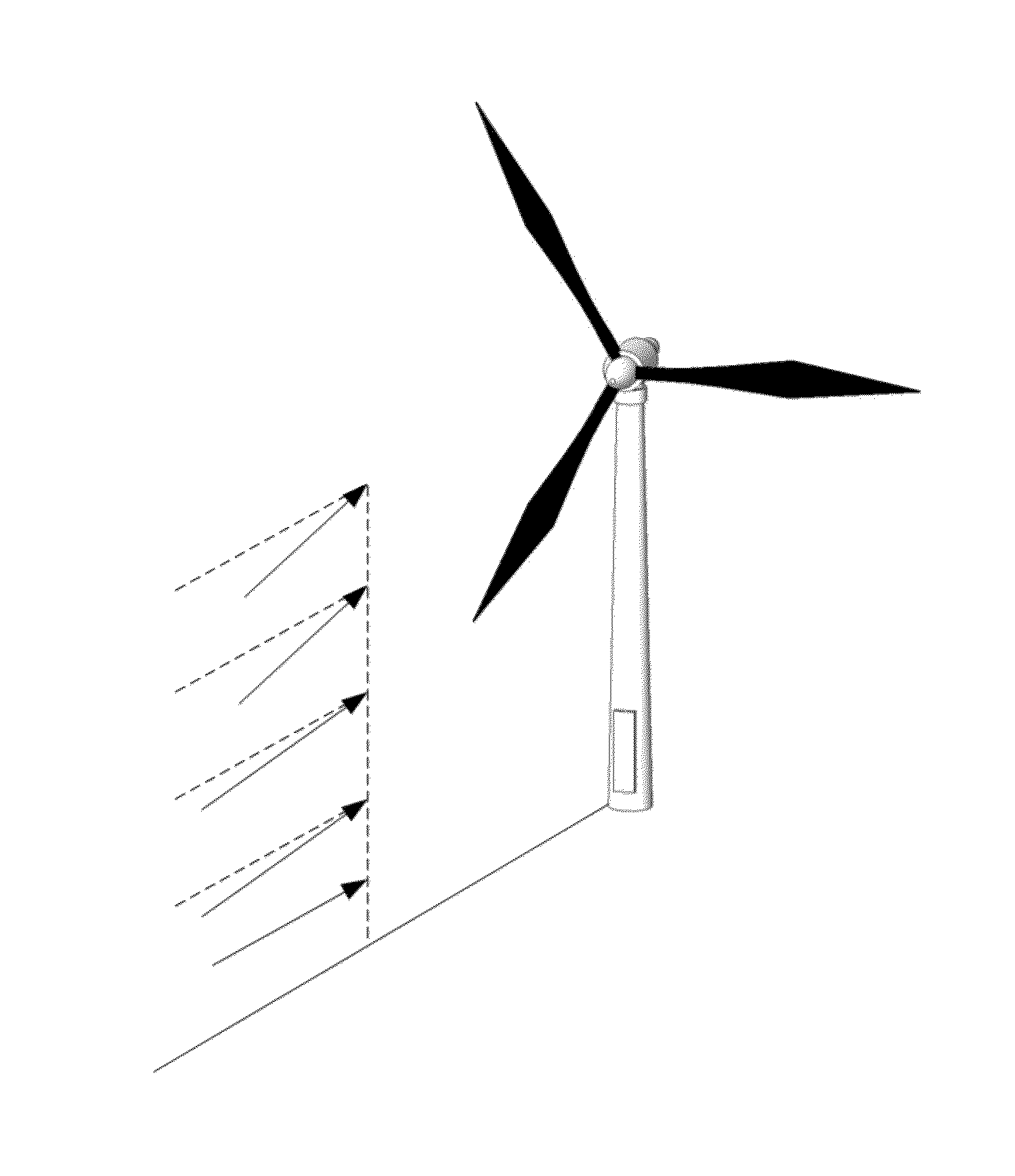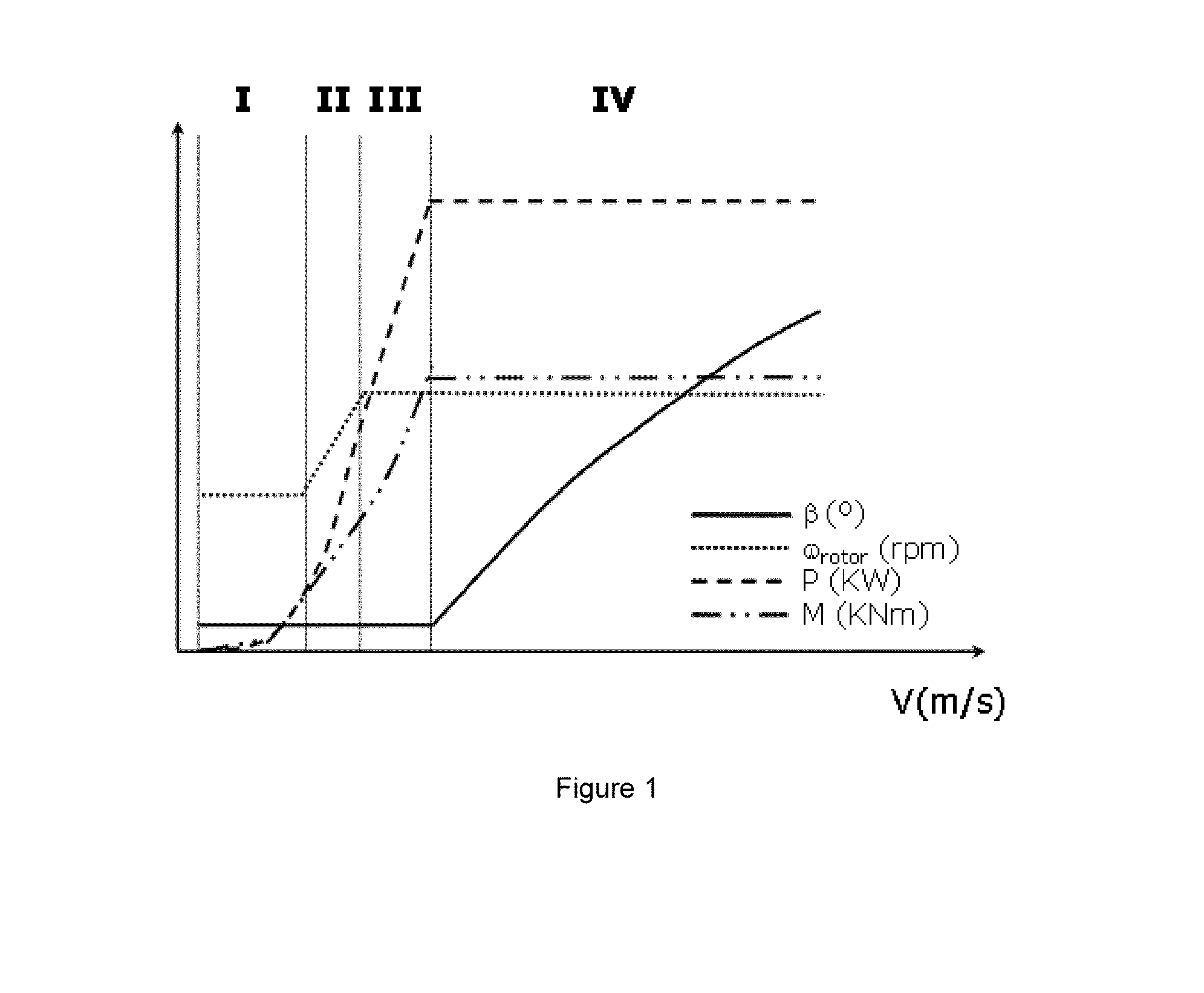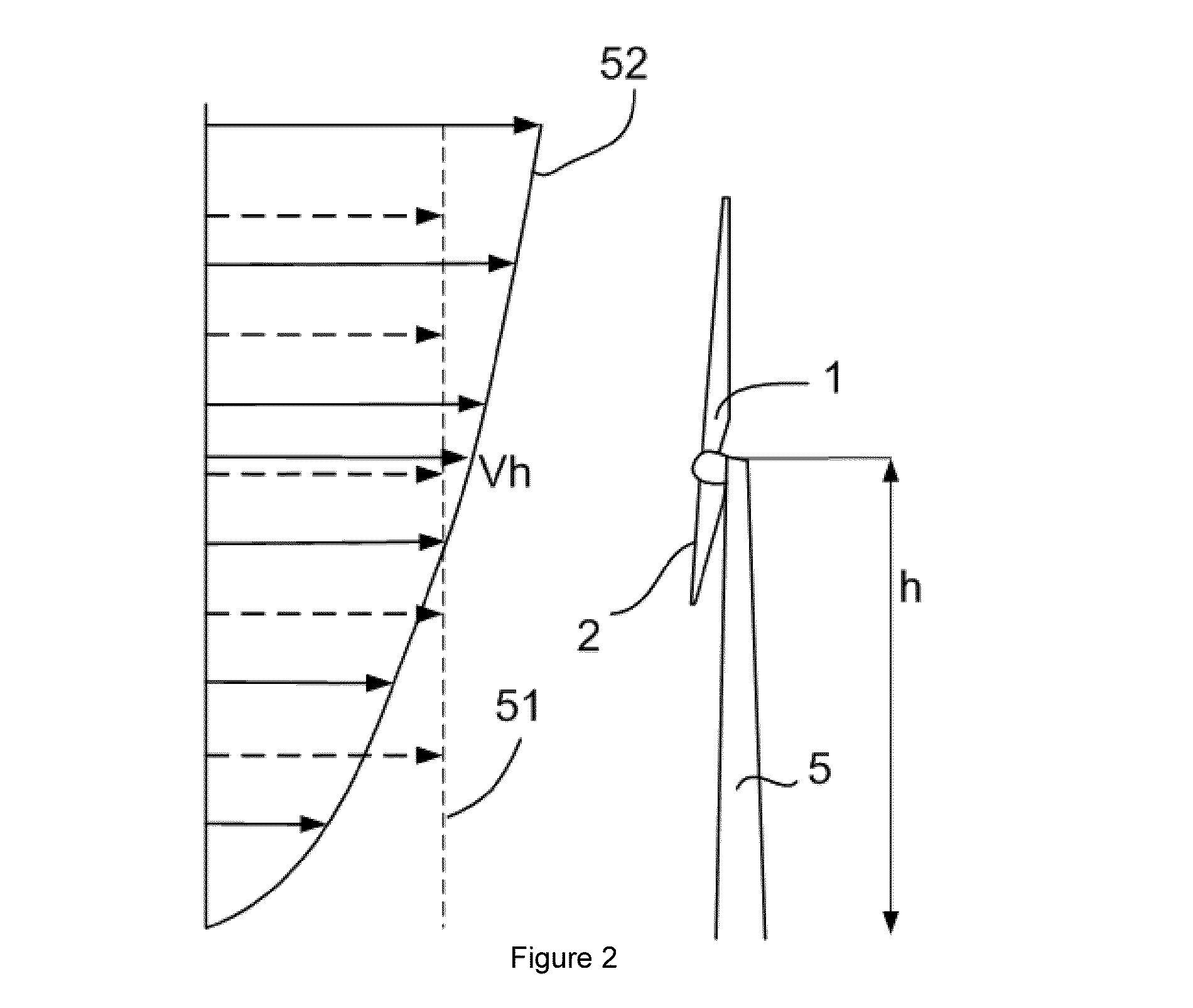Method of operating a variable speed wind turbine
a wind turbine and variable speed technology, applied in the direction of motors, engine control, engine control parameters, etc., can solve the problems of high mechanical load, wind turbines may not necessarily be able to continuously adapt, and operation may not necessarily be optimal, so as to achieve maximum power coefficient, increase rotor speed, and increase electrical power
- Summary
- Abstract
- Description
- Claims
- Application Information
AI Technical Summary
Benefits of technology
Problems solved by technology
Method used
Image
Examples
Embodiment Construction
[0025]FIG. 1 illustrates a prior art control method and shows respectively the pitch angle (β), rotor speed (ωrotor), electrical power (P) and aerodynamic torque (M) at varying wind speeds.
[0026]As previously described, the pitch angle is generally not changed until nominal wind speed is reached, e.g. at 11 m / s. At a slightly lower wind speed, e.g. around 8.5 m / s, nominal rotor speed may be reached. At wind speeds above nominal wind speed, the pitch angle may be varied such as to maintain the aerodynamic torque substantially constant. The rotor speed, generator torque and electrical power generated may also be maintained substantially constant. This may be maintained from nominal wind speed to cut-out wind speed.
[0027]FIG. 2 illustrates the phenomenon of wind shear. A wind turbine comprising a tower 5 carrying a rotor with blades 1, 2 and a third non-visible blade is illustrated. The tower 5 has height h. At height h, the wind speed is Vh. This wind speed may be measured e.g. by an ...
PUM
 Login to View More
Login to View More Abstract
Description
Claims
Application Information
 Login to View More
Login to View More - R&D
- Intellectual Property
- Life Sciences
- Materials
- Tech Scout
- Unparalleled Data Quality
- Higher Quality Content
- 60% Fewer Hallucinations
Browse by: Latest US Patents, China's latest patents, Technical Efficacy Thesaurus, Application Domain, Technology Topic, Popular Technical Reports.
© 2025 PatSnap. All rights reserved.Legal|Privacy policy|Modern Slavery Act Transparency Statement|Sitemap|About US| Contact US: help@patsnap.com



